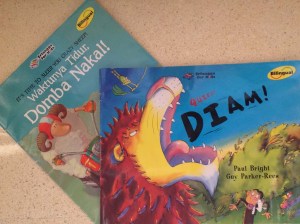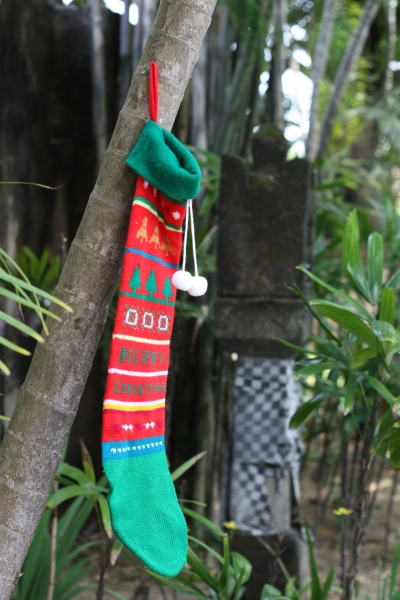 The most exciting thing coming up for me in 2016 is that I have a collection of children’s songs recorded and ready to be released (Ayo! Let’s Go!). I’m so excited about this because it represents a lot of work I did while living in Bali. Just before I left Indonesia in December, I was able to book a music studio, get singers and a pianist together and finally record 11 songs.
The most exciting thing coming up for me in 2016 is that I have a collection of children’s songs recorded and ready to be released (Ayo! Let’s Go!). I’m so excited about this because it represents a lot of work I did while living in Bali. Just before I left Indonesia in December, I was able to book a music studio, get singers and a pianist together and finally record 11 songs.
I was recently asked for some tips on recording children’s songs. A friend is planning to record his original songs this year. Gee, I thought, I don’t know much – I’ve only done it once. But after reflecting, I realised I learnt an enormous amount from doing this recording. Here are some of my tips on how to prepare for a recording.
First – getting your songs ready to record
1) Revise your lyrics.
Two music teachers heard my songs in the early stages and the first thing they said was: too many words. I crammed so many words in some of my lines that it made it hard for adults, let alone children, sing. Not every song has to be Jack and Jill for rhythm and simplicity. But too many words makes it much harder to follow, especially for kids.
When it came time to prepare for recording I revised every single song. I scrutinised every word and every line. I took out innumerable ‘and’, ‘then’, ‘that’ and unnecessary conjunctions. If a word wasn’t completely necessary, I took it out. I even deleted whole verses when I decided the verse didn’t fit the pattern of previous verses, or made the song too long.
As the songwriter you have one way of singing your song. Trying to imagine how other people will approach it is much harder. Looking at your lyrics on paper as if they are poems makes this easier.
2) Be sure about the structure of the song (this might need to be step 1). It could be: intro, verse, chorus, verse, bridge, verse, chorus x 3 as ending. Or it could be more complicated. There is a wide range of children’s songs out there. It’s okay to do something complicated.
However, don’t be scared of repetition. Kids love that they know what is coming up next. Interaction is also fabulous. Have a think about how to include a call and answer, or some other interaction for the kids. One of my songs has an introduction that is completely different to the main song. I had actually written two bamboo songs and decided to combine them. In between the intro and the song I have a short spoken piece, and then there is counting through the song. It was fun to record, took longer of course, but because I had it very clear about who would do what, and what the accompaniment needed to do, it went very smoothly.
3) If you have time, money or friends who play more instruments, think about doing a more complicated arrangement. What instruments would be best for each song? I ended up going with a simple piano and voice arrangement for my songs, but I always thought if the songs needed it I could get other musicians to add drums, guitar or gamelan on top. Work out the basics first and then have a wish list for improving them.
4) Work out the key signature for each song. This was essential for me as I had a fantastic pianist, Thomas Zebua, creating the accompaniment. One of the first things he needed to know was the key for each song. I wasn’t singing the songs myself. In fact I had four different singers working on the album and we worked out the key for each song at the first rehearsal.
Then – have plenty of time for rehearsal
5) Phrasing, emphasis, dynamics, timing, pauses. All this gets worked out in rehearsal. If you’re the one being recorded you’ll have to record yourself over and over again. Ask yourself—and other people: Was that word clear? Should the song be slower or faster? Or should the tempo speed up? When I was rehearsing I was the one listening to the singers so it was easier for me to pick up on phrases that needed work. Pronunciation of English words was one area where we needed to go over some phrases many times. Funnily enough, even some of the Indonesian was improved upon in the studio when there were other Indonesians listening to the songs.
6) Practice the endings. I didn’t want all my songs to end the same way. I thought it would be dull if every song finished fading out, or if every song repeated the refrain three times and then finished. So I made sure some finished abruptly, some finished with piano, some faded out slowly. The same with beginnings.
Finally – what to expect in the studio
7) Book as much time as you can afford and be very prepared that that might change. I had some crazy idea that we could record 11 songs in one day. Well, we almost did, but that was only the piano. I had to book two more days in the studio after that to get the singers recorded. That was my inexperience showing up big time! Luckily I was in Bali in a small studio near my house in Sanur and the studio was available the following two days. I ended up having not just the Friday in the studio but Saturday afternoon and all of Sunday. It’s unlikely that a song will be recorded in only one take so if you’re the person who has hired everyone to be there, you have to decide when something needs to be done over and when it’s good enough. Singers only have so many takes in them and you only have so many hours in the studio.
8) Don’t forget the mixing. Most of the mixing for my songs was done in the studio straight after the recording and the engineer did a great job. That meant we both stayed in the studio for another two hours after the recording finished to make sure all the tracks were right, and I could leave with all the tracks pretty much finished. But I’ve still sent it to a friend who is a professional musician/engineer in Australia and he is working on it and getting it ready for distribution.
9) Take some photos. You might want to document this experience. It’s so much fun! I had a blast of a time in that hot little bamboo studio in Sanur. I got to listen to my songs sung over and over. And, while it was kind of stressful, worrying that we wouldn’t get it all done and wondering if the singers were getting quite the feel that I’d hoped, it was a fantastic experience.
10) And finally, get copies of all the files. Ask for every possible format that you might need. Mp3 for sure but if you want some more mixing afterwards, you’ll probably want them in a different format. Also, you might want the accompaniment by itself, with no voice over. If you’re a solo performer, suddenly you have your own backing track and you can be free to perform the song without having to play an instrument.
These are just the tips from someone who has gone through a recording experience once. Others are sure to have more.



 How did you find the illustrator?
How did you find the illustrator?














 Dora is an interesting example as, while it restricts the Indonesian translation to mostly Indonesian, it still introduces a few Spanish words. So you end up with things like ‘Hola! Namaku Dora.’ The language used seems pretty spot on. If you had a Dora DVD that could play in Indonesian this could help reinforce some of the terms used, eg. Rancel for Backpack.
Dora is an interesting example as, while it restricts the Indonesian translation to mostly Indonesian, it still introduces a few Spanish words. So you end up with things like ‘Hola! Namaku Dora.’ The language used seems pretty spot on. If you had a Dora DVD that could play in Indonesian this could help reinforce some of the terms used, eg. Rancel for Backpack. Twelve Days of a Bali Christmas
Twelve Days of a Bali Christmas
 4 swimming pools
4 swimming pools 11 roosters crowing
11 roosters crowing In Balinese the word is lipi. There is no way I can imagine lipi to be a scary word. It has such a friendly sound, like a name for a guinea pig. Or a snail, as in, ‘Oh no, I just trod on a lipi.’
In Balinese the word is lipi. There is no way I can imagine lipi to be a scary word. It has such a friendly sound, like a name for a guinea pig. Or a snail, as in, ‘Oh no, I just trod on a lipi.’
 Advice from both these snake experts includes: it’s no use to spread sulphur everywhere – too much of that yellow powder will only kill your lawn. It is advisable to teach the kids what to do if they see a snake (stand still, yell out and walk backwards keeping your eye on the snake). And keep the yard so tidy it offers little cover for snakes to visit. Also, be particularly alert in the beginning of the wet season as that is when baby cobras are hatching and start looking for frogs to eat. Rain means more frogs which means more snakes.
Advice from both these snake experts includes: it’s no use to spread sulphur everywhere – too much of that yellow powder will only kill your lawn. It is advisable to teach the kids what to do if they see a snake (stand still, yell out and walk backwards keeping your eye on the snake). And keep the yard so tidy it offers little cover for snakes to visit. Also, be particularly alert in the beginning of the wet season as that is when baby cobras are hatching and start looking for frogs to eat. Rain means more frogs which means more snakes.